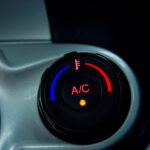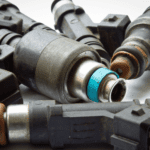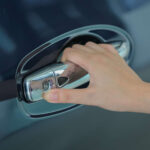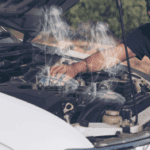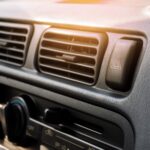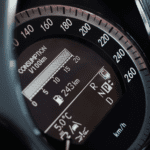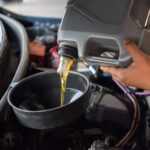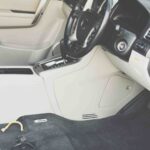Getting the wrong brake fluid for your car could be disastrous, especially if yours uses an unusual one. Trying to figure out which you should use in your vehicle when there is a shelf full of different types should be easier than it is. So, what kind of brake fluid do you need in your car?
This article is not here to tell you that the Volkswagen Golf GTI has DOT4 brake fluid in it, but it intends to educate you on the different types of brake fluid available. Knowing what each brake fluid does makes it relatively easy to determine which fluid is in your vehicle.
What Does Brake Fluid Do?
Brake fluid is a hydraulic liquid that applies pressure to other components in the brake system, which in turn applies the braking force to slow the vehicle down. There are other components in the brake system, like a brake booster, which make it easier than trying to compress fluid with your foot, but to sum it up in a sentence:
When you press the brake pedal, hydraulic pressure is applied to the brake calipers, which squeezes the brake pads against the brake rotors, slowing the vehicle.
Certain brake fluids have another job, such as lubricating components inside the brake system.
The Different Types of Brake Fluids
Each different brake fluid has its properties and uses for its designed environment. For ease of understanding, the lower the DOT number, the lower the fluid’s boiling point.
DOT3
DOT3 brake fluid is a clear, light brown/yellow, glycol-based fluid with a dry boiling point(when new) of 401 degrees Fahrenheit (205 degrees Celsius). Dot 3 is a highly corrosive fluid that should be used with care. Because DOT3 is hygroscopic, meaning it absorbs water from the atmosphere, care must be taken when storing bottles of DOT3. It must also be replaced during the correct service schedules due to its lower starting boiling point, which will lower further with age.
In certain parts of the world, DOT3 is still very popular, but as European car manufacturers use DOT4 on newer vehicles, DOT3 has become less popular.
DOT4
DOT 4 brake fluid has a dry boiling point of 446 degrees Fahrenheit (230 degrees Celcius). It is a high-performance brake fluid nearly all European car manufacturers use as standard. It has the same yellowy-brown color as a DOT3 fluid; by eye, it is impossible to tell the difference between the two fluids. It is also a glycol-based fluid that acts as a good lubricant for components in the brake system, such as the ABS pump.
DOT4 brake fluid should be replaced every two years or every 24,000 miles, whichever comes first. Like DOT3 brake fluid, DOT4 is also hygroscopic, so moisture absorption will lower its boiling point and effectiveness.
DOT5
DOT 5 brake fluid has a dry boiling point of 500 degrees Fahrenheit (260 degrees Celcius). It is a purple-colored silicon-based brake fluid. It is not a good lubricant and, therefore, not used on road vehicles with ABS systems. DOT 5 brake fluid is not hygroscopic, so it does not absorb moisture, which means brake systems with DOT 5 typically have a softer brake pedal. This is because you get localized water puddles in the brake fluid, which attracts rust to metal components, releasing air, even though the liquid is not corrosive.
You would typically find DOT5 brake fluid in military vehicles, race cars, and motorcycles. All those where the possibility of brake fade needs to be removed; as you might have guessed, it is also an expensive fluid.
DOT5.1
DOT5.1 has a dry boiling point of 518 degrees Fahrenheit (270 degrees Celcius). It is a yellowy-brown glycol-based fluid almost identical to DOT3 and DOT4 fluids, generally used on high-performance road cars, supercars, and race vehicles for its very wet, high-boiling point. Like DOT5 brake fluid, it is costly to purchase and must be replaced during standard service schedules.
As DOT5.1 is the highest dry boiling point of all the “road going” brake fluids, it is one that most people modifying cars replace the standard DOT4 fluid with.
Lhm
LHM or Liquide Hydraulique Minerale is a very unusual brake fluid unique to Citroen, Peugeots, Rolls-Royce, and Bentleys. It is a green mineral-oil-based hydraulic fluid for the brake system, power steering, and hydraulic suspension. LHM has a dry boiling point of 464 degrees Fahrenheit (240 degrees Celcius).
Not all Citroens, Peugeots, Bentleys, or Rolls-Royces come with LHM as standard; the ones that do will have a self-leveling suspension system. It’s usually easy to tell by the green-colored components in the engine bay. Due to its chemical makeup, LHM cannot be mixed with any other type of brake fluid.
Can I Use Any Brake Fluid in My Car?
You shouldn’t just put any brake fluid in your car. Each car has a unique type as standard, as indicated in the vehicle handbook. Brake fluid has the essential job of lubricating the ABS pumps, so the manufacturers design the braking system and its components to work with a specific type of brake fluid.
Another way to tell which brake fluid is used is to look at the filler cap for the brake fluid. It is usually black or yellow (unless it uses LHM fluid) and will usually have the type of brake fluid printed on it.
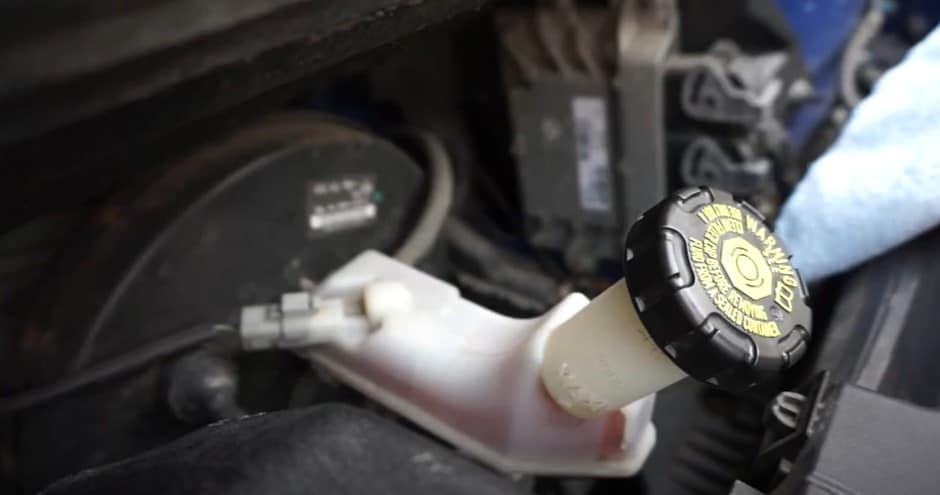
Can You Mix Different Brake Fluids?
Yes, you can mix certain brake fluids unless you are in an emergency. You should only go up the range, not down. However, don’t be scared to go down if necessary; thoroughly flush the fluid and restore it to the correct brake fluid ASAP.
If your vehicle has BF DOT 3, 4, or 5.1, then the brake fluid can be mixed without causing any damage to the brake system. However, you should only go up the scale; even so, you should only do this in an emergency. For example, if your vehicle has DOT 3, you can put either 4 or 5.1, but if your car has DOT4, you will never put DOT 3 in. You would only go up to use DOT 5.1.
You can only mix these types of brake fluids because they are Glycol-based. Mixing them should only be a temporary solution because each fluid has its unique boiling point; mixing fluids alters the brake fluids boiling, which may not be for the best. Replace mixed brake fluid at the earliest convenience by carrying out a complete brake fluid flush.
DOT5 is strictly for DOT5 braking systems only. DOT5 is silicone-based, so it cannot be mixed with Glycol-based fluids.
Vehicles with mineral-based LHM fluid can only use LHM fluid. Regular DOT 3, 4, 5, and 5.1 fluids do not have the same properties, so cannot be mixed.
Frequently Asked Questions
Can You Just Top Up Brake Fluid?
Yes, you can top-up brake fluid. However, you should ensure that you are using the correct type so that you don’t accidently mix brake fluids; lowering the boiling point of the fluid.
What Happens If I Use The Wrong Brake Fluid?
If you use the wrong brake fluid, it can lead to serious consequences, especially if you accidentally lower the boiling point of the brake fluid. Additionally, using the wrong fluid can damage the brake system, A.B.S pump, seals, gaskets, and other components.
Summary
Ensuring your brake system is in top condition starts with ensuring your vehicle has the correct brake fluid. When answering what kind of brake fluid I need in my car, essentially, if your vehicle has a yellow/brown colored liquid, it is safe to mix with DOT3, 4, or 5.1. Especially if the fluid is low, Mixing LHM or DOT 5 brake fluid with other types of brake fluid cannot and should not be done. If your vehicle has either of these fluids, it is wise to have a mechanic or the OEM vehicle manufacturer confirm this to know if you ever get caught in a problem.
